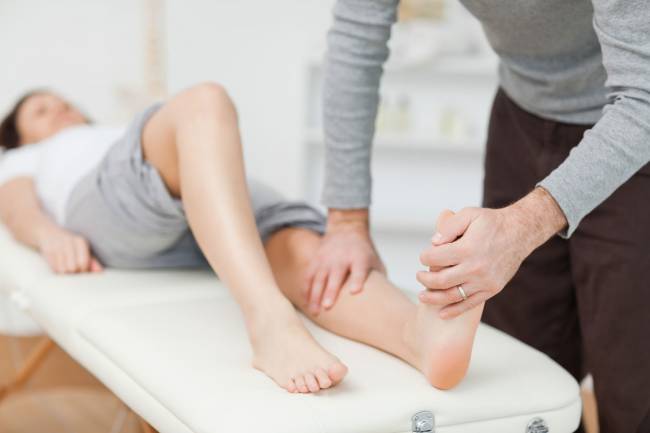
How and Why You Should Work on Grip Strength
Grip strength might not be the first thing that comes to mind when you think of fitness goals, but its importance should not be underestimated. A strong grip extends far beyond a firm handshake; it plays a pivotal role in your overall strength, functional fitness, and even daily activities. In this blog, we'll explore why grip strength matters, its benefits, and practical strategies to enhance it.
Why Grip Strength Matters?
Grip strength is more than just an indicator of a strong handshake; it's a reliable measure of your overall physical health and functional fitness. Here are some compelling reasons why grip strength matters:
1. Functional Fitness
Think about the countless everyday tasks that rely on grip strength: opening jars, carrying groceries, lifting objects, and even typing on a keyboard. A stronger grip enhances your ability to perform these tasks with ease and reduces the risk of injury.
2. Athletic Performance
Grip strength is crucial in various sports and activities, from weightlifting and rock climbing to tennis and martial arts. A powerful grip gives you an advantage in holding onto equipment, maintaining balance, and transferring force effectively.
3. Overall Strength
Grip strength is often referred to as a "gateway" to overall strength. When your grip is strong, it often indicates that your wrists, forearms, and upper body are well-conditioned. This strength can translate into improved performance in exercises that involve pulling and lifting.
4. Injury Prevention
Weak grip strength can lead to imbalances in your upper body, increasing the risk of injuries in your wrists, elbows, and shoulders. By strengthening your grip, you stabilize these joints and reduce the likelihood of strains and overuse injuries.
5. Health Marker
Research has shown a strong correlation between grip strength and various health markers, including cardiovascular health and mortality risk. A study published in The Lancet found that grip strength can predict the risk of heart attacks and strokes.
Benefits of Improved Grip Strength
Investing time and effort into improving your grip strength can yield a range of benefits that extend beyond physical strength. Here are some advantages of a stronger grip:
1. Enhanced Confidence
A strong grip can boost your self-confidence. Knowing that you have the physical ability to handle various tasks and challenges can have a positive impact on your overall mindset.
2. Improved Posture
Grip strength exercises often engage muscles in your back and shoulders, promoting better posture. As these muscles strengthen, you're more likely to stand and sit upright, reducing the risk of posture-related discomfort.
3. Increased Independence
Maintaining grip strength as you age can help you maintain your independence. A strong grip ensures that you can perform daily tasks without relying heavily on assistance.
4. Greater Muscle Engagement
Working on grip strength involves activating muscles throughout your forearms, wrists, and even upper arms and shoulders. This engagement provides a comprehensive upper-body workout.
5. Mental Toughness
Improving grip strength requires consistency and determination. Overcoming challenges and progressing in your grip strength journey can cultivate mental resilience and discipline.
Strategies to Improve Grip Strength
Now that we've established the significance of grip strength, let's delve into effective strategies to enhance it:
1. Grip Strength Exercises
Incorporate specific exercises that target your grip strength into your routine. These can include:
- Deadlifts: This classic compound exercise engages your hands and forearms as you lift the weight.
- Pull-Ups: Gripping the bar during pull-ups challenges your grip strength.
- Farmers Walk: Carry heavy weights in each hand and walk a certain distance. This exercise mimics real-world tasks that require grip strength.
- Kettlebell Swings: The swinging motion of a kettlebell challenges your grip as you control the movement.
- Grip Trainer Tools: Use grip strengtheners, hand grippers, and grip balls to perform dedicated grip strength exercises.
2. Forearm Training
Dedicate time to training your forearms, as they play a major role in grip strength. Wrist curls, reverse curls, and wrist roller exercises can effectively target these muscles.
3. Progressive Overload
Just like any other form of training, progressive overload is key. Start with a manageable weight or resistance and gradually increase it as your grip strength improves. This ensures consistent progress and prevents plateaus.
4. Isometric Holds
Isometric exercises involve holding a position without movement. Incorporate static holds such as plate pinches or towel hangs, where you hang a towel over a bar and grip it for a set period.
The Final Word
The importance of working on grip strength cannot be overstated. Incorporating hand gripper exercises and other grip-enhancing techniques into your fitness routine offers a multitude of benefits that extend far beyond a strong handshake. From bolstering your functional fitness and athletic performance to promoting overall health and injury prevention, a powerful grip serves as a cornerstone of physical well-being.
So, grasp the opportunity to enhance your grip strength with the aid of hand grippers and other exercises and unlock the door to a stronger, more resilient you.












